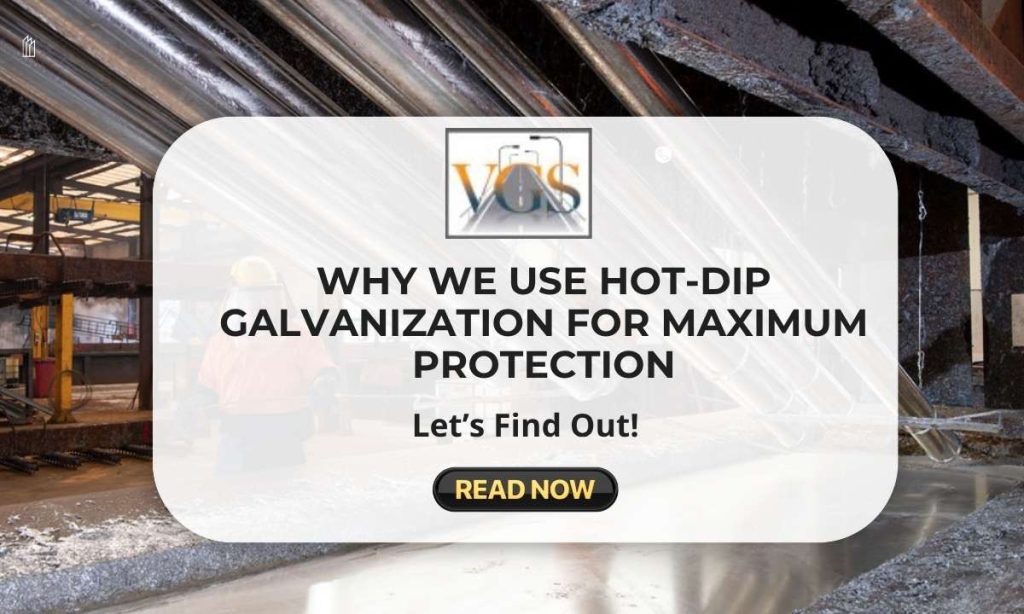As per the recent demand for durability, the need for corrosion material, and structural integrity, how do you ensure that the steel structures will stand out against a harsh environment? Are you aware of the most efficient way to protect the essential steel infrastructures from rust or any damage due to the environment? If not, then here is your go; however, first, you need to understand whether it is a constructional project, automotive, marine, or even infrastructural, you can only make a difference by choosing the right method of protection. This not only creates a protective boundary but is also helpful to avoid costly repairs and maintain a lasting performance.
Before diving into this guide, let’s give you an overview of the preferred choice of the industry owner for maximum protection of steel infrastructure, and that is hot dip galvanization. Here in this guide, you will explore how this process can safeguard any steel investment for so many decades.
What Is Hot-Dip Galvanization?
The hot-dip galvanization is simply a metal-integrating possess, in which clean steel is submerged into a molten zinc liquid at 450 degrees temperature. This is when zincs create a bond with the molecular level of steel and form a layer of strong alloy. It is the opposite of the surface treatments, including painting, electroplating, and other similar protection methods. It makes the steel surface even more resistant to corrosion and long-term environmental damage.
Why Industries Depend on Hot-Dip Galvanization
The infrastructure of steel, which is more into moisture, pollutants, and chemicals with no layer of protection, is more quickly get in touch with corrosion. This is what led to a safety and structural failure; however, hot-drip galvanization is one of the reliable and long-term defences that is a widely used protection method that is preferred to extend the life of the components of the steel.
Common Applications:
- Highway guardrails and barriers
- Construction beams and structural frameworks
- Fencing, roofing, and wall supports
- Utility and lighting poles
- Electrical enclosures and piping systems
- Automotive chassis and components
Key Benefits of Hot-Dip Galvanization
Exceptional Corrosion Protection
The zinc coating is best to add a physical and a sacrificial barrier onto the steel surface so that it will corrode first. The purpose it serves is to slow down the oxidation process to prevent the damage as time passes.
Complete Surface Coverage
Hot-dip galvanization is a process that ensures full coverage of the infrastructure of steel components, even if the shape is too complex, including edges, corners, and internal cavities. This process covers the areas even which are even difficult to paint and apply spray coating.
Long-Term Cost Efficiency
Indeed, the initial cost to apply the protective coating to the zinc surface may be expensive in comparison to other alternatives. However, when compared to others, this requires less maintenance and shares a highly valuable and cost-effective method for many decades.
Mechanical Durability
The layer created by a metallurgical process is extremely hard, which can protect the steel surface and make the efficient and seamless use of the steel components in high-traffic areas, industrial zones, and as a transport application.
Quick Processing Time
The hot-dip galvanization process is not similar to a coating system that requires immense curing and drying. It is something that can be processed in just a few hours and reduce the final delivery timeline of the project.
Environmentally Responsible
Zinc is preferred, as it is fully recyclable and produces minimal waste, which is processed under the galvanization process. This is what allows the reuse of the steel products that are already treated.
Hot-Dip Galvanization vs. Other Coating Methods
When planning to apply a corrosion protection option, you are advised to compare the hot-dip galvanization with other common coating options. This is important to consider as every method shares its place and offers unmatched value in durability, performance, and lifespan of the steel component. Let’s have a look at the comparison table so that you will be able to configure the best coating method for your project or industry.
| Coating Method | Corrosion Resistance | Durability | Maintenance | Expected Lifespan |
| Hot-Dip Galvanization | High | Very High | Low | 30–70+ years |
| Paint Coating | Moderate | Moderate | High | 5–10 years |
| Powder Coating | Moderate to High | High | Moderate | 10–20 years |
| Electroplating (Cold Galv) | Low to Moderate | Low | High | 1–5 years |
Protect Steel with Proven Galvanization
As you have read above that the hot-dip galvanization is not only a protective finish, but it is a valuable and strategic investment in the safety and durability to maintain a long-term performance in a project or an industry. The fact is that modern businesses demand a higher standard for the protection of steel components, where hot-dip galvanization is one of the sustainable options. For this, VGSteel offers specialized hot-dip galvanizing service in Malaysia, which is crafted to match the expertise and high-volume capabilities of the industries.
Are you looking for corrosion-resistant steel for longer performance? VGSteel is here to help you. Contact us today and request a quote for hot-dip galvanization services at vgironsales9@gmail.com or by giving us a call at 03-5161 2731

